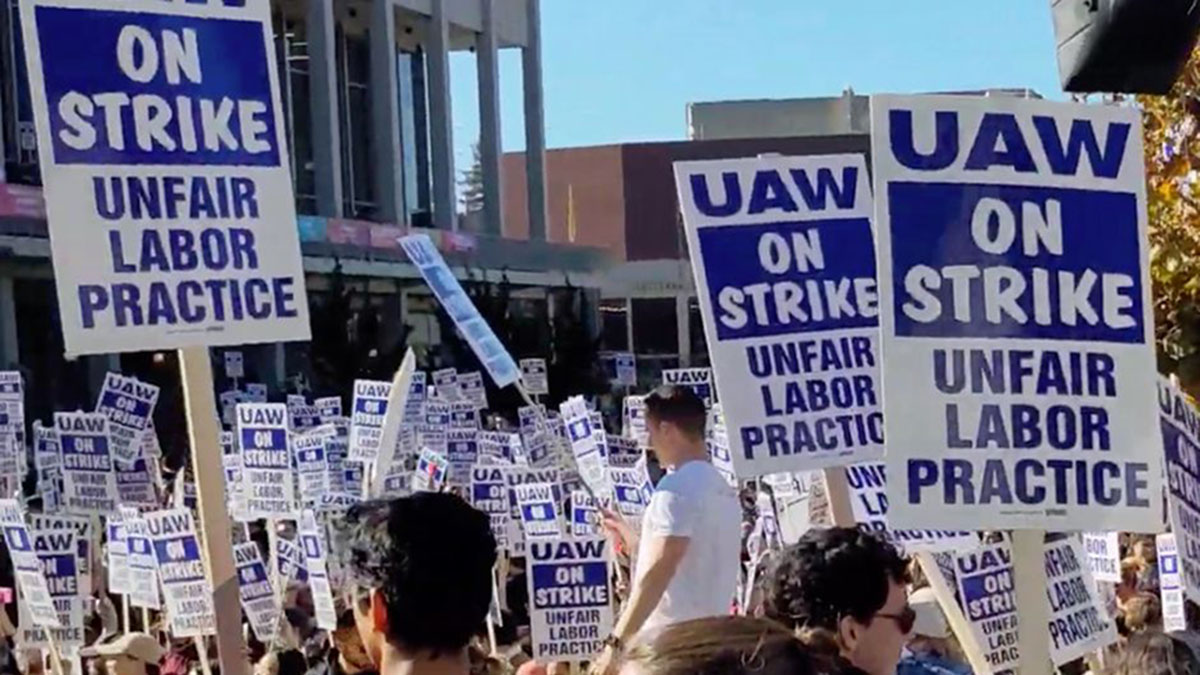By Louis Freedberg
The strike of academic student workers at the University of California, now in its third week, has major implications for public education, which is why it is being watched closely by educators throughout the nation.
If the students get anywhere close to forcing the 10-campus university system to meet their demands, it could set a precedent that universities pay its student workers a living wage.
That would run counter to the prevailing model where universities rely on graduate students – and postgraduate researchers – to carry out essential teaching and research functions, without having to meet their basic living expenses, and especially the cost of housing.
State’s Disinvestment and Tuition at Public Universities
In fact, the state of California has mostly gone in just the opposite direction over the last half century by disinvesting in the university, and instead turning to both undergraduate and graduate students to pick up an ever larger share of its operating costs by charging many of them tuition.
The scale of the state’s disinvestment has been breathtaking. In 1980-81, 87% of the university’s core budget came from Sacramento. Four decades later, state funding had plummeted to merely 39% of the core budget.
This is not a recent development. Over a decade ago then-UC Berkeley Chancellor Robert Birgeneau described his flagship campus as a federal university because it was receiving more money from federal research grants and student aid than it was from the state.
“The reality is that with the progressive disinvestment in higher education by the state, the state is becoming a tertiary player,” Birgeneau said at the time.
Student Enrollment Has Doubled
Further putting pressure on the university is the state’s 60-year-old Master Plan for Higher Education. It decrees that the university enroll the top 12.5% of high school graduates.
That may have seemed reasonable at the time when the state population was around 16 million. But today the population is 40 million.
As a result, student enrollment has soared, more than doubling over the past four decades. Another factor – a welcome one — is that an increasing proportion of the high school students are meeting the requirements for admission.
But it has also put more pressure on the university, which has opened only one new campus — UC Merced— over the last half century. With an enrollment still under 10,000, Merced has only partially addressed the overcrowding issue.
Complicating the university’s basic operational model is that the University of California enrolls proportionately far fewer graduate students than comparable private universities. As a result, it must draw on a smaller pool of graduate students to help with research and teach sections in ever-larger lecture classes.
Housing Costs
All this is happening at a time when California students are facing among the highest housing costs in the nation – at a university that has turned increasingly to students to pay a greater share of its core operating costs. That’s despite the 1868 charter establishing the university declaring that “admission and tuition shall be free to all residents of the state.”
One positive sign is that during his first term, Gov. Gavin Newsom departed from many of his predecessors by meaningfully calling for, and providing, greater investments in the university. But that was made possible by the record surpluses the state has enjoyed.
Now those surpluses are coming to an end. It would not be surprising if Sacramento reverted once again to trimming the state’s contribution to UC. This counterproductive dynamic must be reversed, however difficult that may be, if California still wants to have a world-class university system that can compete with private institutions.
A Broken Business Model
The stakes for many other public universities are arguably even higher than they are at the University of California, which generally pays its students workers more than most other public universities do. In fact UC President Michael Drake says the university is offering compensation “on a par with top private research universities.”
Not all students would necessarily agree with him on that front. But regardless of the outcome of the strike has highlight what is essentially a broken business model at most public and many private universities: being able to rely on students for essential services without having to pay them a living wage.
What it also points to, at the University of California and elsewhere, is the contradiction between the desire of state leaders to have great public universities even as they fail to provide them with the resources needed to maintain that status.
Louis Freedberg, a UC Berkeley-trained anthropologist and veteran education journalist, is former executive director of EdSource.




